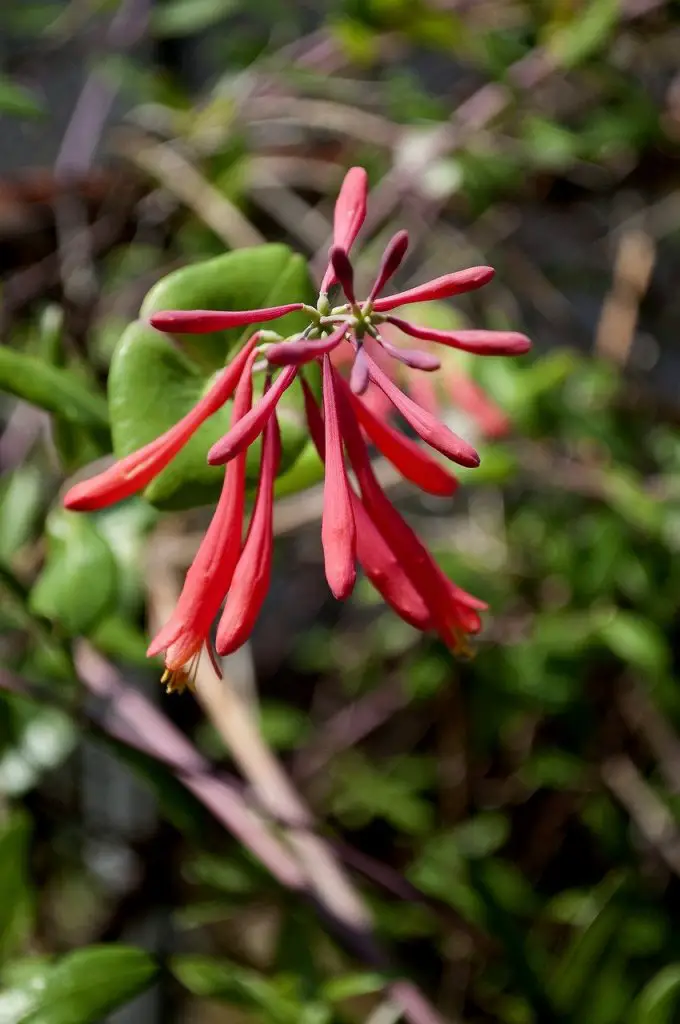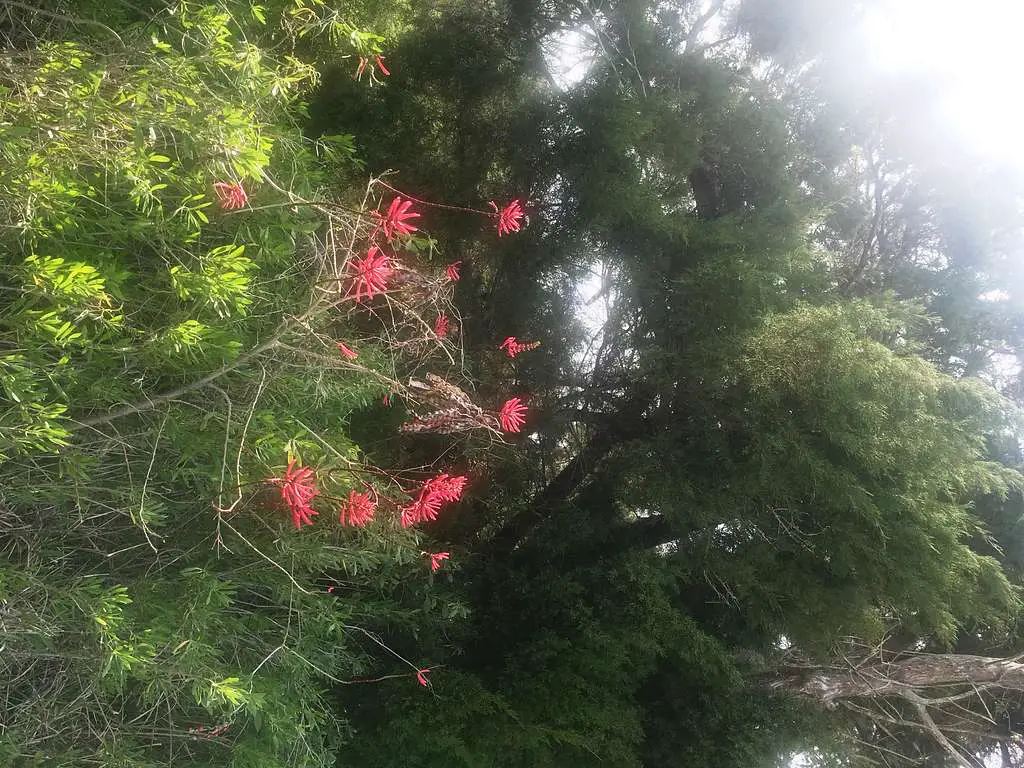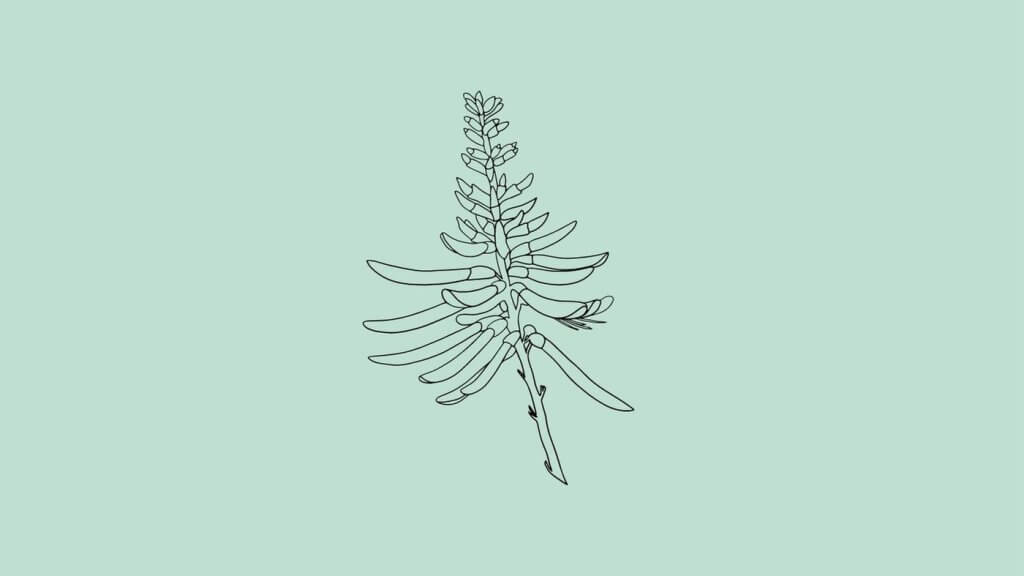Coral bean, Erythrina herbacea, is a native plant with vivid red tubular flowers. It can be found in Mexico and parts of the coastal United States. The name coral bean comes from the bright red seeds inside the seed pod, which are poisonous. However, flowers and leaves can be consumed once boiled.
Erythrina herbacea prefers warm, tropical climates, full sun, and well-draining sandy loam soil.
It acts as a perennial when grown in its native locations but as an annual in areas with freezing winters.
It grows best in USDA Hardiness Zones 8-11.
What Are You Foraging For Right Now?
We're thrilled to hear your ideas. What would you like to submit today? Feel free to share your thoughts and experiences with us.
Discovering coral bean
The coral bean is a deciduous shrub. It belongs to the Fabaceae, which is part of the legume family. Other common names include cherokee bean, red cardinal, cardinal spear, and mamou plant.
The coral bean plant has a perennial root containing a woody lower stem. Several more woody, herbaceous stems grow from the lower stem.
Each stem contains three glossy green, arrowhead-shaped leaflets forming the leaf, which has a thorny, prickly underside.
At the top of these stems are long tubular flowers that grow in bright, scarlet red clusters and bloom from early summer until fall.
In the fall, the seeds pods emerge, turning a blackish purple. Inside the seed pods are bright red, shiny seeds.
Erythrina herbacea typically grows 3-8 feet tall but can reach heights up to 20 feet.

Is coral bean edible?
The flowers and leaves of coral bean can be consumed with caution. The plant is known to have antioxidant properties.
Flowers and leaves must first be boiled for 15 minutes to draw out the poisons. They reduce in size when cooked and have a taste and texture similar to spinach.
Be certain you have done thorough research before consuming.
Coral bean seed toxicity
Erythrina herbacea seeds, or beans, are toxic to humans and pets. They contain toxic alkaloids which can cause paralysis when ingested. To be safe, they should not be touched without gloves.
In Mexico, coral bean seeds are used to poison rats and fish.
Coral bean uses
Plant Erythrina herbacea in your garden or yard as a border. It’s best to place it with other flowers, as when it’s not blooming, the plant can become ragged, and leaves lose their glossiness.
It’s also excellent for a native plant garden or landscape. Pollinators such as hummingbirds, bees, and butterflies love coral bean!
Erythrina herbacea has diuretic, narcotic, and purgative qualities. Some Native American tribes have used the coral bean plant for medicinal uses such as bowel pain, digestive issues, and rheumatic disorders.
The bright red seeds have been used to make jewelry and other decorations.
Where can you find coral bean in nature?
Coral Bean grows wild in Mexico, and states such as Florida and Texas. It has been found up the coast all the way to Maryland and Washington.
It grows best in full sun or partial shade, and sandy, well-draining soil. Coral bean is often found along the coast, in open woodlands, and in natural clearings.

How do you grow coral bean?
Caution: When handling coral bean seeds, be certain to wear gloves due to their toxic nature.
You can purchase a coral bean plant from a nursery specializing in native plants. If you want to grow your own from seed, they can be bought or saved from last year’s plant. If planting from seed, note it takes 3-4 years until bloom time.
Erythrina herbacea seeds need to be scarified first. Scarification is a process where you rub something rough, like sandpaper, into the seed or make knick marks on it with a knife.
You don’t want to damage the shell or crack it open, so work gently. This is a process that occurs naturally in nature when the seeds are left out all winter and helps them germinate.
Once your coral bean seeds are ready, be sure your last frost date is past, and the temperatures are remaining warm. Space seeds 3-5 feet apart.
They can be started indoors if you live in the northern states. Use the same process, starting 2-3 weeks before your last anticipated frost date.
If transplanting from a pot, also allow 3-5 feet between coral bean plants. The hole should be deep enough for the top of the plant to sit even with the ground.
Coral bean plants prefer dry, sandy soil, so add coarse sand to the top 2-3 inches of the planting hole, and water well. They do not like to sit in water, so be certain the soil is well draining.
Once established, Erythrina herbacea is a low-maintenance shrub that is pest, salt, and drought tolerant.
Rachel Schmeltzer is a writer, mom, teacher, and dreamer. She enjoys reading, traveling, history, spending time with her boys and her cats, and foraging in the woods of Minnesota.

